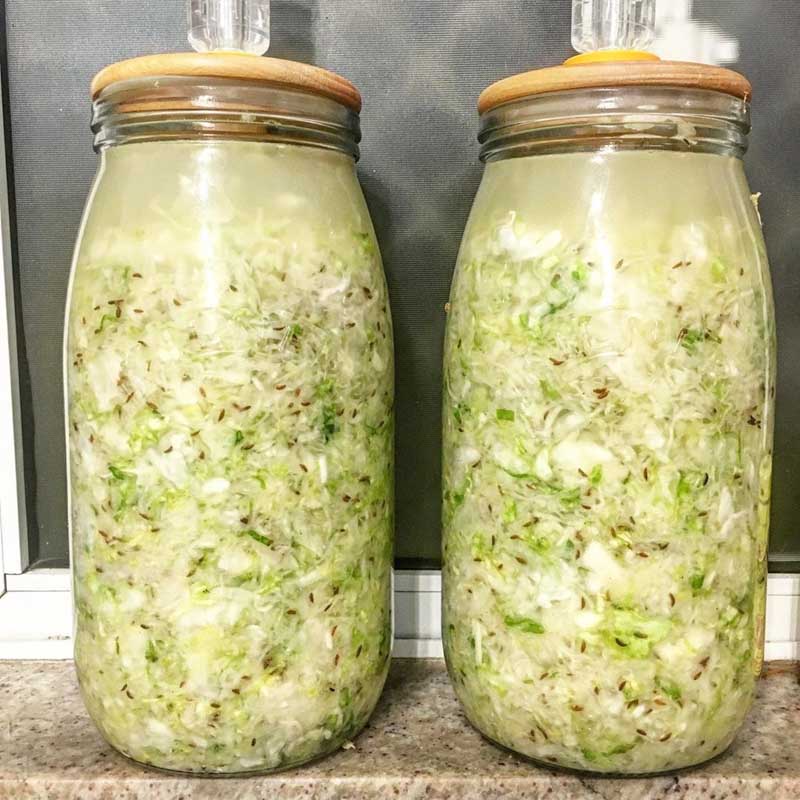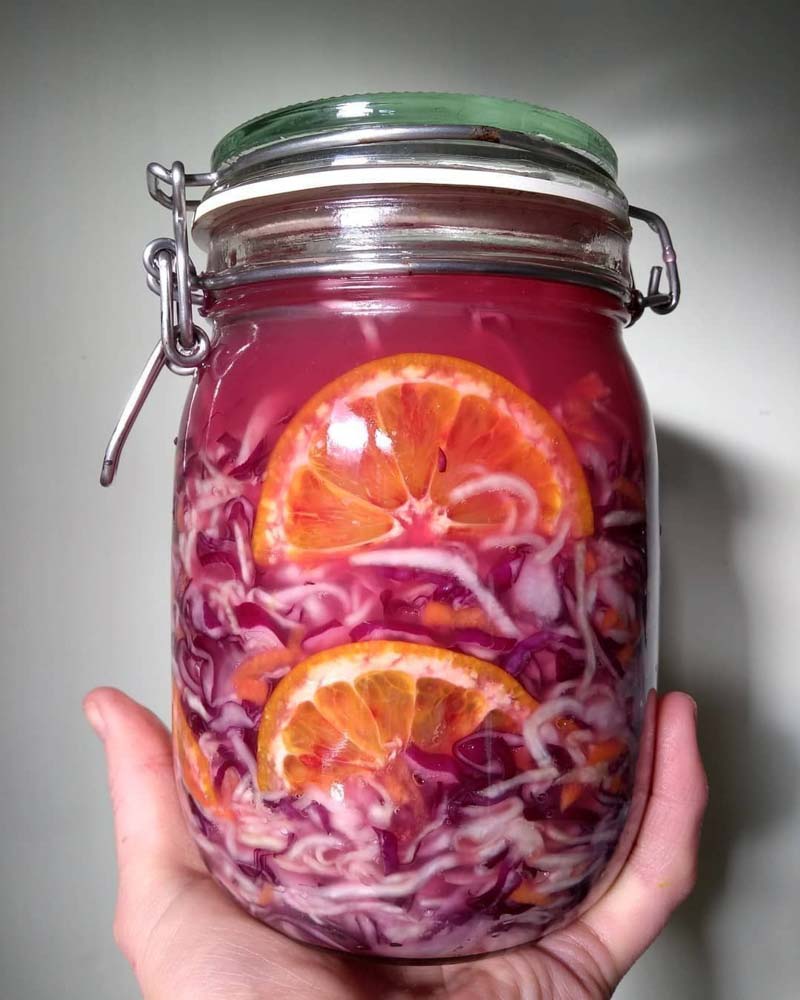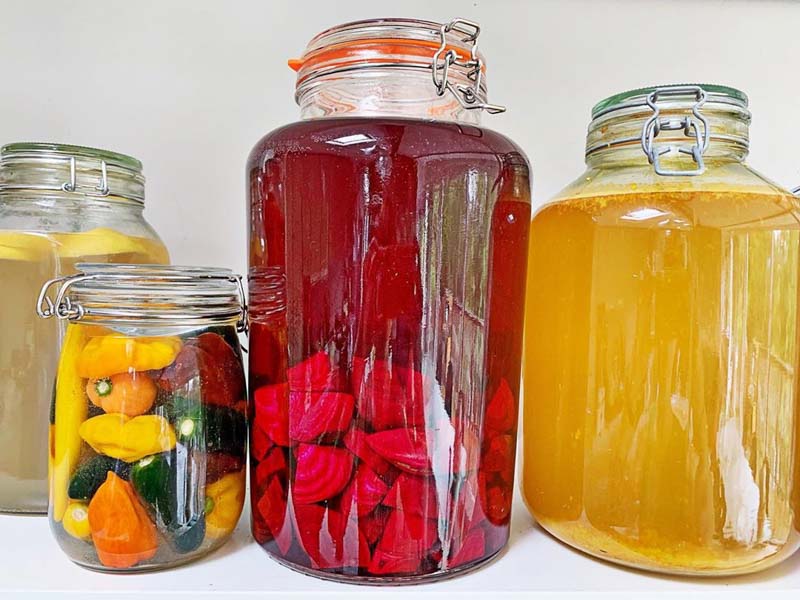During this extended ‘Circuit Breaker’, it seems like we are getting busy in the kitchen in an effort to stay sane. If you’ve browsed through our Simple Stay-home recipes, you’ll know that there cooking is actually pretty easy and even fun. For the more adventurous home cooks who want a challenge, you can delve into the world of fermentation.
I know this sounds scary and even a little intimidating, but you’ll be surprised at how many things we eat are actually fermented. From the obvious sourdough bread, kimchi, beer to chocolate (yes, it goes through a process of fermentation too), you’re eating way more fermented food than you think.
The art of fermentation lets you make use of the food you already have in the kitchen in new and exciting ways. In fact, one could argue that it is for the more ‘efficient cook’ since most things are a do-it-and-leave-it-alone kind of thing.
While some processes are more complicated than others, I’ve narrowed it down to 7 fermented foods that you can try at home with minimal equipment. Let the fermenting begin!
1. Sourdough
I know. I’ve seen it and you’ve seen it plastered all over Instagram. Making your own sourdough has seen a meteoric rise as of late and I can see why.
Before we get into the ins and out of making your own sourdough, we must first understand what is it about this bread that sets it apart from your Gardenia white bread. If you’ve eaten sourdough before, chances are you’ll notice how light and airy this loaf is, complete with its characteristic tang.
Well, sourdough is somewhat of an ancient bread that requires no leavening agent from commercial yeast, as opposed to other kinds of bread. Instead, sourdough relies on the natural yeast and lactobacilli that are found in flour.
With just the addition of water, sugar, you’ll have what is known as a starter or pre-ferment. You’ll see this transform from just flour and water to a bubbly mixture that can be kept alive for years.
Many bakers like to call their starter a ‘pet’ since you need to do regular ‘feedings’ is to keep it starter alive. The longer you can keep your starter, the tangier and the more complex your bread will be. Some bakeries can keep their starter alive for generations, and it has become their signature.
There is a multitude of recipes online for how to make your own starter ranging from the über analytical to weighing everything out to more approachable recipes where you just have to remove half the mixture. We do like Josh Weissman sourdough starter video since he also converts the figures for you.
Not to mention, a sourdough starter is not used to just make bread. Since it’s a leavening agent—meaning it can make things fluffy—you can try your hand at sourdough waffles, pancakes and biscuits. There is no stopping you, once you have a good starter on your hands.
You can even name this your CB starter, if you like.
2. Kimchi
One of the many reasons Koreans never seem to age is attributed to the kimchi they consume. After all, fermented food is often accompanied by a whole host of benefits—the good bacteria and probiotics will ensure you are glowing in no time.
Traditionally, kimchi is made in giant vats and stored underground and taken out after a considerable time had passed. Just like sourdough, and sauerkraut, kimchi goes through a process of lactic acid fermentation. The yeast strains and bacteria break down the sugars to lactic acid which is what gives kimchi that distinctive smell.
It turns our making kimchi at home is pretty easy. Just like making any fermented food, all you need are sterilised containers and a whole lot of veggies. Not forgetting a romp in the Korean aisle of your supermarket.
With a heaping spoonful of gochujang (Korean chilli paste), some napa cabbage, radish—now you’re in business. For the visual learners, check out our video.
3. Sauerkraut
Nothing says fermented that the pungent, vinegary smell of sauerkraut pervading the air. One of the distinguishing features of German cuisine and literally meaning ‘sour cabbage’, you can find sauerkraut most often in Eastern European cuisine.
This usually involves thinly shredded cabbage that is layered with salt and left to ferment.
It’s as easy as that, just like the rest of fermented food the longer you keep it the sourer it will become. Have your sauerkraut with thick sausages or help to cut a thick rosti.
4. Kombucha
Kombucha has taken over matcha as the go-to health drink.
For the uninitiated, Kombucha is a fizzy fermented black tea that is loaded with probiotics to help with digestion and chock-full of anti-oxidants which is undoubtedly good for you. The process of making your own kombucha is pretty simple, the only more difficult part is obtaining the ‘SCOBY’.
SCOBY—which stands for ‘symbiotic culture of bacteria and yeast’—is the main driver to turn your ordinary black tea into a bubbly, tart drink. Now, there are several ways you obtain this jelly disc-like friend. You can make the SCOBY yourself, buy it online or if you know any kombucha brewing friends (lucky you!), they’ll be happy to give you some.
Then, all you need is clean sterilised mason jars or bottles, any black tea you have lying around and you’re on your way to gut health.
5. Fermented Ketchup
This one is new to me; I know good ‘ole Heinz Ketchup but fermented ketchup is something I’ve never heard of. As it turns out, fermented ketchup is basically making your own ketchup, sans the additives and sugar.
All you need is regular tomato paste, salt, any kind of vinegary sauce (cider or Worcestershire), honey and a starter culture.
I know what you’re thinking, starter culture? Sounds intimidating but this can be a basic whey (the liquid portion when milk is separated) and even liquid from fermenting your sauerkraut. How many people can say they have made their own ketchup? After this, you’ll never want for any regular ketchup again.
6. Fermented Garlic
Now for the truly no-fuss, no-muss cook, this one is for you. There are several ways you can ferment garlic, be it in a brine, soy sauce or covered with honey. These are no-brainer recipes that literally anyone can do.

All you need is a copious amount of aforementioned allium and a jar. The only ‘difficult’ portion is peeling the garlic, but I find the process rather therapeutic, so to each his own.
For the recipe with honey, all you do is a jar with garlic and cover it with honey. The garlic will mellow out while the honey will take on a thinner consistency. Since honey has a high sugar concentration, you don’t have to worry about the garlic going bad in there.
As for the brine, all you need is a simple salt and water solution. Just like the honey, the garlic will take on a less pungent and intense flavour and you can eat it right out of the jar.
7. Fermented Juice
There is a whole world of fermented juice and if definitions aren’t super strict, you can even classify beer in this section. However, I find the process a tad tedious.
For easier recipes, Beet Kvass is one that you can consider. Beet Kvass is a jewel-toned liquid—that just like kombucha—is full of probiotic goodness.
Similar to making sauerkraut and kimchi, all you need is some beets, salt and water. I mean, it doesn’t get any simpler than that. You can add the brine just like how we did for the ketchup, but it’s not totally necessary.
Plus, it’s a good way of clearing your fridge if you don’t want to cook the vegetables.
I’ve only scratched the surface with the possibilities of fermented food. If you’d like to get into the science behind it, I’d recommend ‘The Noma Guide to Fermentation‘ by René Redzepi and David Zilber. It’s the definitive guide into the world of fermentation and gets down to nitty-gritty details of it.
Fermentation is a practice in patience, especially during times like these. Should you find yourself plagued with a case of cabin fever, this can be a good activity to keep you sane.
The post 7 Fermented Food That You Can Make at Home appeared first on SETHLUI.com.















0 comments:
Post a Comment